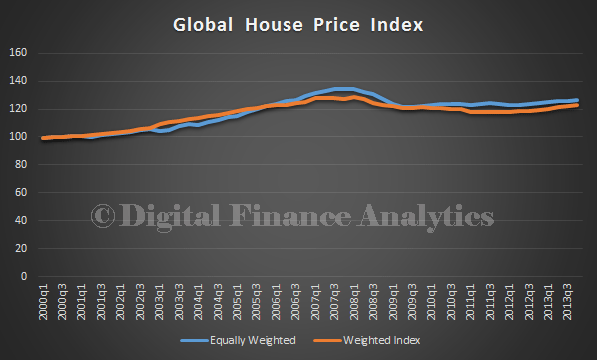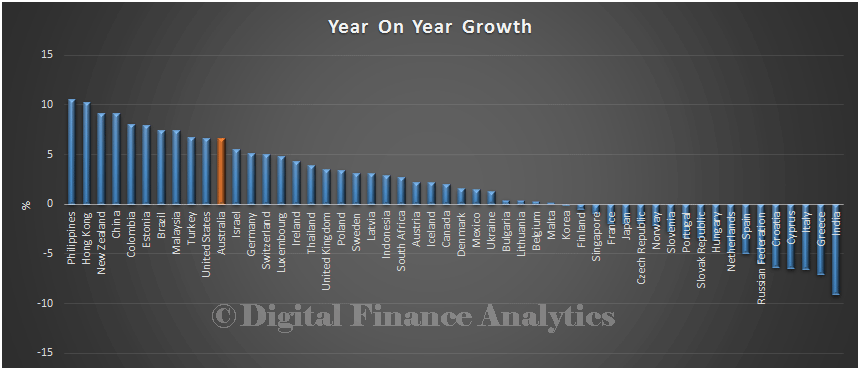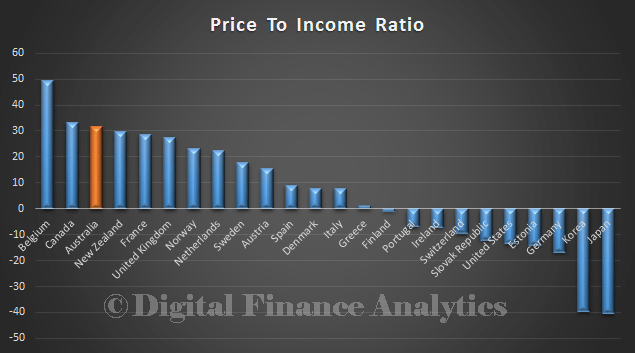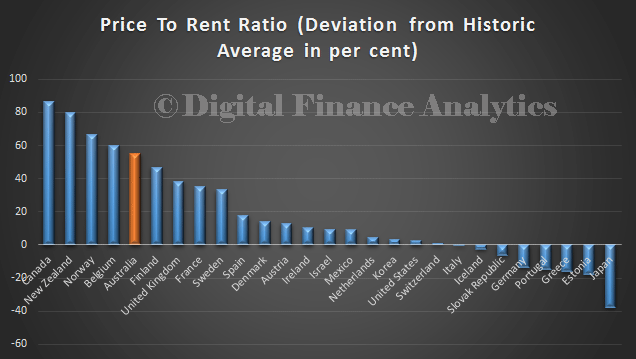The IMF has launched its Global Housing Watch, a selected set of data highlighting potential pressures in the housing market across countries. “Housing is an essential sector of every country’s economy, but it has also been a source of instability for financial institutions and countries. Understanding the drivers of house price cycles, and how to moderate these cycles, is important for economic stability.In its first release, they warn of high prices, and tensions between central bank policies and broader economic issues”. They argue that housing has been the subject of “benign neglect”.
Here are the initial findings, with Australia highlighted where appropriate.
First, the Global House Price Index is a compilation of average housing prices in different countries that tells us if prices are going up globally. The global house price index highlights the fact that after the GFC in 2007, there was only a minor correction, so house prices remain high by historic standards.
 Year on year growth in prices does vary by country, Australia is towards the top of the growth trend, although New Zealand is even higher, and the Philippines is top.
Year on year growth in prices does vary by country, Australia is towards the top of the growth trend, although New Zealand is even higher, and the Philippines is top.
 Looking at relative price to income, Australia is on average third highest (they do not split out specific markets in countries). Belgium is the most expensive, Japan the least.
Looking at relative price to income, Australia is on average third highest (they do not split out specific markets in countries). Belgium is the most expensive, Japan the least.
 Finally, the ratio of house prices to rent also highlight that Australia is at the high end, behind Canada, New Zealand, Norway and Belgium. Japan is the lowest.
Finally, the ratio of house prices to rent also highlight that Australia is at the high end, behind Canada, New Zealand, Norway and Belgium. Japan is the lowest.
We do have a set of policy tools that can help – sometimes these are referred to as “Mip-Map-Mop.” Microprudential (Mip) policies look at an individual bank’s balance sheet, for example to determine if it is making too many real estate loans. But it could be that the individual banks are doing what seems healthy for them, but what the banking system as a whole is doing needs results in an unhealthy growth in lending.
So, in addition, macroprudential regulations (Map), operating at the level of the financial sector as a whole, come into play. The most commonly used measures cap how much individuals may borrow relative to their income. These prudential measures are being increasingly used by countries to prevent an unsustainable build-up in debt.
Finally, there is the monetary policy (Mop) that involves the central bank raising interest rates if they want to cool off the housing sector. This can be tricky, because sometimes the economy is weak but the housing sector is booming, and raising the interest rate can harm the overall economy.
We have argued for some time that Australia need to use macroprudential policies to help to bring the run-away housing market under control. Focus on investment lending should be first priority. Over emphasis on lending for housing sucks the air from the broader economy and makes it harder for potentially productive businesses to get the lending support they need. Households servicing larger debts have less spending power, which dampens economic activity.


2 thoughts on “IMF Warns On Housing, Launches New Index”